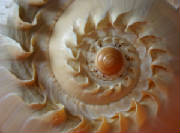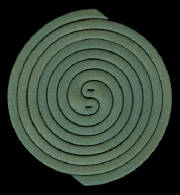What is Ortho-Bionomy®?
Ortho-Bionomy is a gentle type of bodywork
that can release dysfunctional patterns that no longer work well for the body. By exaggerating the body’s preferred
postures, the body’s self-healing process is engaged, and the inherent wisdom of the body is honored. Stimulating
your natural reflexes for self-correction, your body can release tension patterns and reorganize. This is made possible when
new options of movement are offered. Relaxing movements help to unlock tension patterns, relieve pain, and helps to restore
structural balance. Ortho-Bionomy speaks to the body in a language the body can understand and respond. Ortho-Bionomy
is subtle yet powerful.
Who does it help? Clients include:
Ortho-Bionomy addresses • chronic and acute
problems • back issues • arthritis • problems associated with scoliosis • posture imbalances • neck
and shoulder problems • everyone can feel better.
It is about making you more comfortable in your body.
What can Ortho-Bionomy do for someone?
· Break the cycle of pain
· Promote recovery from injury
· Increase circulation
· Restore natural balance and alignment
· Promote relaxation and reduce tension
in the body
· Contribute to more restful sleep
· Encourage fluidity in joints and movement
· Increase range of motion
· Reduce tension and soften the tissue
around scars
· People report they have less restriction
in their bodies
· Addresses muscle and joint pain
· Increases personal awareness
Does
Ortho-Bionomy hurt?
No. It shouldn’t be painful or cause more pain.
These movements and positions are non-forceful and are designed to move toward ease and away from tension. If it hurts –
tell us...don't be shy. Communication with the Practitioner is important and essential for a productive session.
What happens in the body?
After a release, the body can get a sense of its internal placement from the inside
that it can't get from the outside. This gives it a chance to self-correct its "misunderstandings" given the input
through it's new position. This type of therapy works deeply within the body without working deeply. There is a resetting
of joints by making them more balanced giving the body a chance to re-educate itself through its internal feedback system.
What happens in a session?
Clients wear loose comfortable clothes so they may be positioned with ease. The Practitioner
gently moves the client into positions of comfort. Movements are made toward ease and away from tension and away from resistance.
Usually, this position is an exaggeration of a preferred pattern of movement or place of comfort. It is through these preferred
postures and positions that releases that a session begin to unfold and reorganize. Ease of movement and a more efficient
function of an area has an opportunity to emerge. The Practitioner may suggest some home exercises to help reinforce the new
and released areas. This self-care helps to integrate the changes introduced in the session. Sessions last about one hour
in length though the work may keep on unfolding within your body for days after a session. This is because when changes occur
- shifts will also happen to support or facilitate new arrangements within the body. Also, this will give compensation patterns
a chance to let go.

